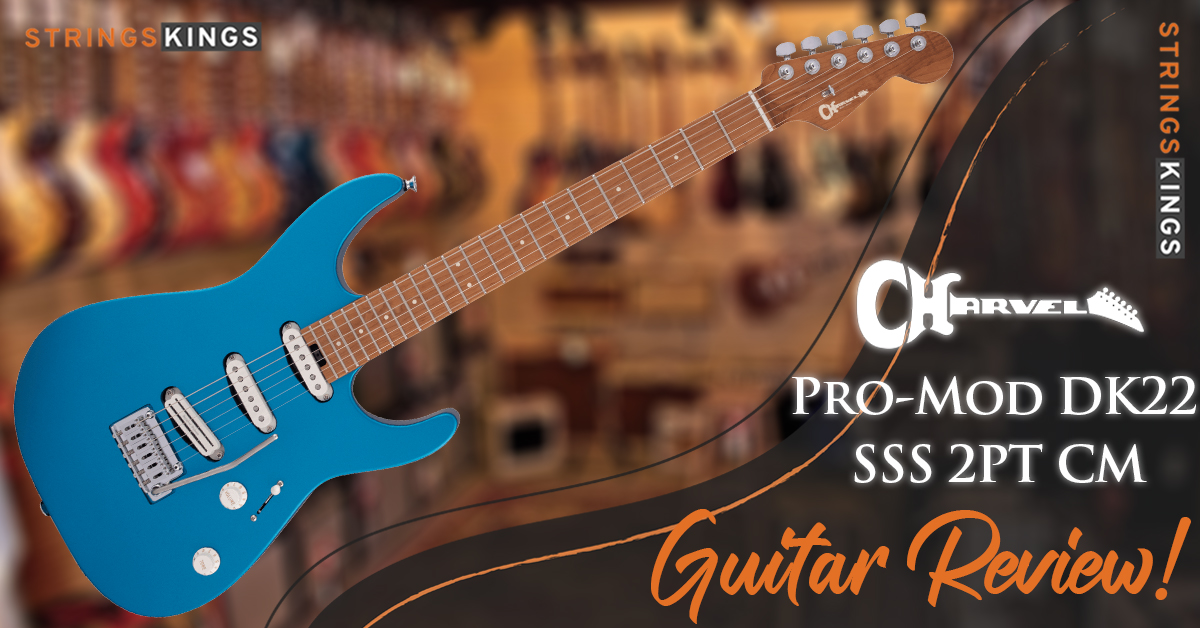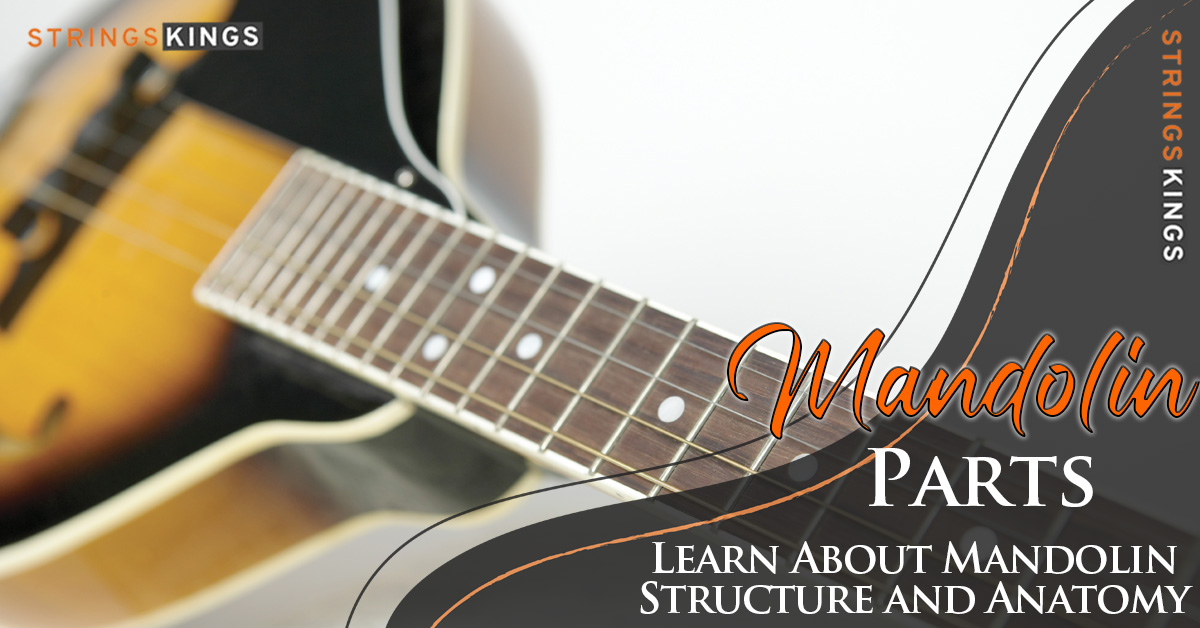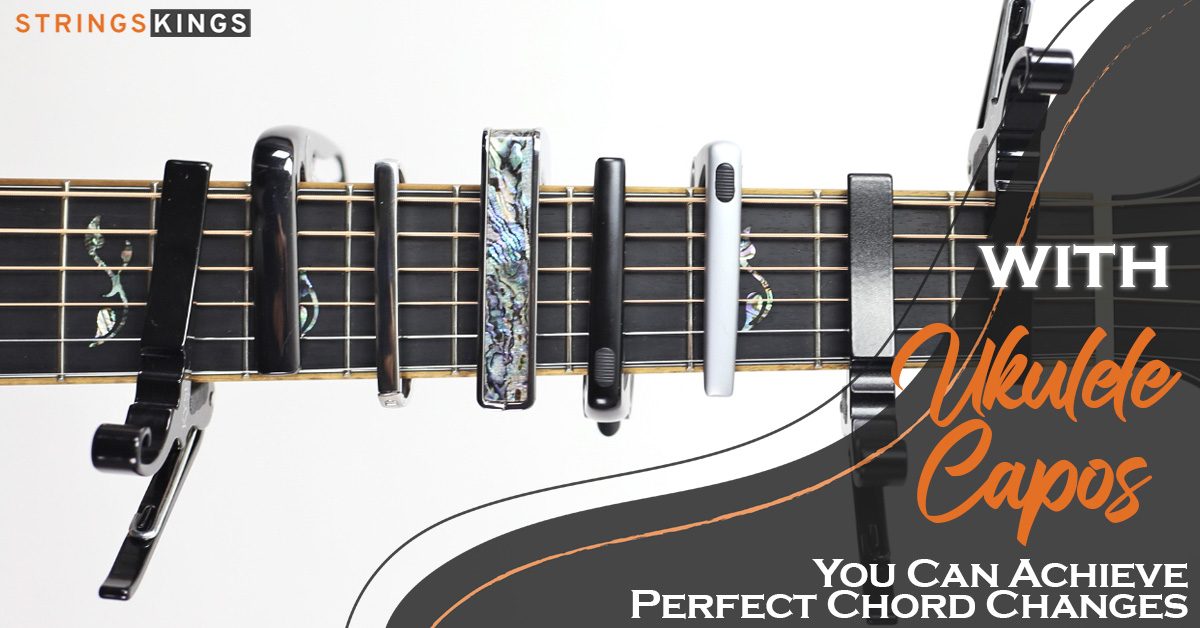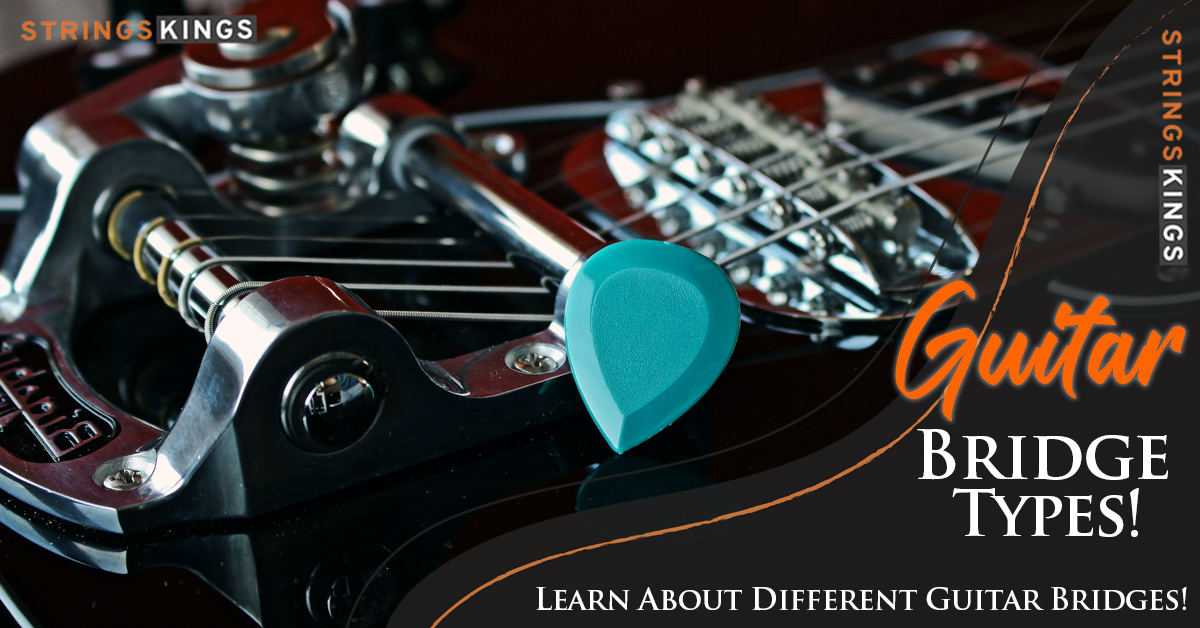Table of Contents
Learn More About All Banjo Parts
Banjos are usually seen as simple stringed instruments held together by a player’s skill and will. However, banjos are actually very complex instruments with many interesting parts to take apart.
This article explores the various parts of a banjo and how they affect its sound and construction. If you’re interested in learning the banjo, keep reading to learn some cool facts that will help you play and maintain your instrument better.
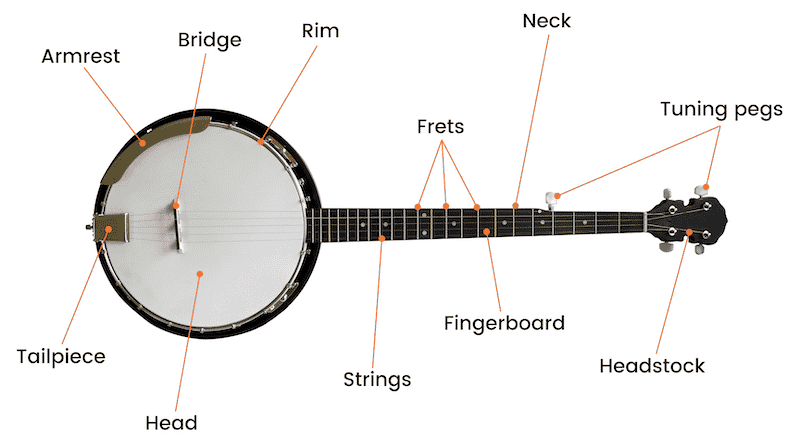
Banjo Anatomy
Other instruments don’t have some of the unique parts found on the banjo.
These are a few of the most important:
- The headstock
- Tuners
- Neck
- Fingerboard
- Pot assembly
- The resonator
Although there are other details to consider as well, these are the main items you should focus on.
Banjo Headstock
Located at the top of the banjo, the headstock is where the pegs and neck are attached. Strings are attached to the front-facing bolts on top of the headstock, with pegs on the back.
Many headstocks are carved in an ornate fashion, while others are simple, utilitarian pieces. In general, a banjo’s shape doesn’t affect the sound, but it does affect how the tuning pegs are placed.
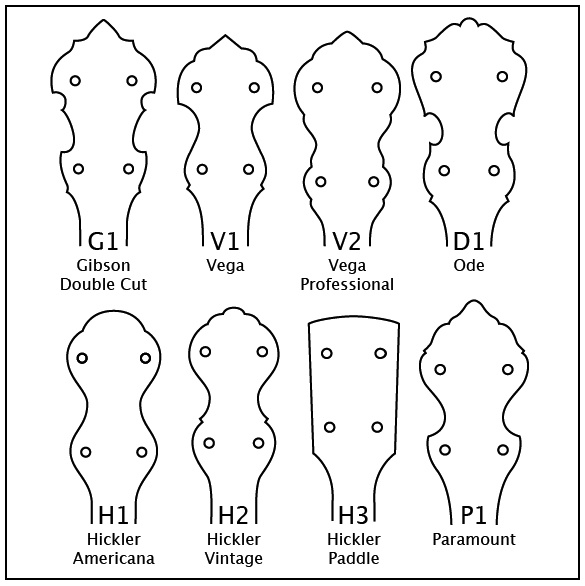
Nut
Nuts are small strips of ebony or hard plastic attached to the headstock. A small slot keeps the banjo strings aligned with the neck and separate from one another.
Banjo maintenance involves making sure the strings are wound correctly into the nut.
Banjo Tuners
The tuners are the small knobs attached to the back of the headstock, also known as pegs. By turning them left and right, you change the tuning patterns as a result of loosening and tightening the strings.
Four tuners are usually attached to the headstock, while a fifth is located further down the neck. The most common friction peg material is plastic or ebony, but metal can also be found.
Banjo Strings
There are usually five strings on a modern banjo tuned to open-G. Banjos, however, have only four strings attached to the headstock, unlike some other stringed instruments.
A shorter fifth-high string might be attached halfway down the neck. There are several types of banjos, however, and this will depend on which one you have.
Steel is the preferred material for professional banjo strings, but nylon strings are also available for a lower price. Steel strings are needed, though, to achieve the iconic banjo twang.
The Fingerboard
Banjo fingerboards are where the magic happens. The top half of the banjo’s neck is always made from hardwood, such as ebony.
In order to form cords along the fingerboard, the strings are tightly wound at the headstock.
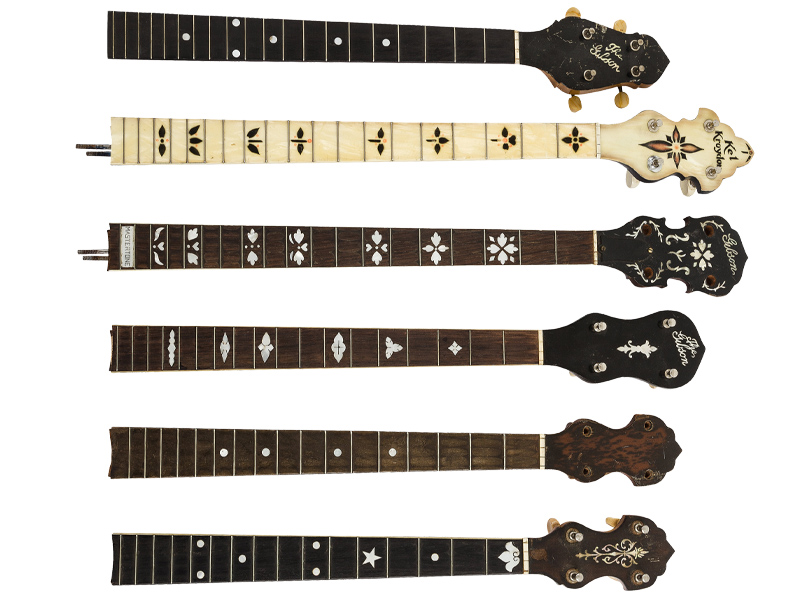
Inlays on the fingerboard are usually made of steel or silver. The fingerboard is decorated with these, but they have no effect on the sound of the banjo.
Experienced players, however, use them to mark how far up and down the fingerboard they’re playing.
Frets
The frets on your banjo are likely to run perpendicular to the neck unless you play a fretless instrument. There are typically nickel-silver ones that are pressed directly into fingerboards or simply glued onto the neck.
By identifying different tonal sections on the fingerboard, players can quickly and efficiently vary the pitch and frequency of the sound coming from the strings.
Banjo Neck
In spite of the fact that the fingerboard is technically also a part of the neck, they deserve separate attention.
There is always wood on the back of a guitar neck, although it can vary from the wood on the fingerboard. There are different types of banjos, but a standard banjo usually has a neck length of 25.5 inches.
Truss Rod
Despite appearing straight, banjo necks are slightly curved for ease of playing. Truss rods are used to correct the neck when it starts to bend too much over time.
This curvature can be adjusted by the truss rod underneath the fingerboard. Furthermore, the truss rod controls the height of the strings of the neck, affecting the banjo’s sound and playability.
Pot Assembly
Pot assembly refers to a banjo’s belly, which contains many parts that have a dramatic effect on its sound.
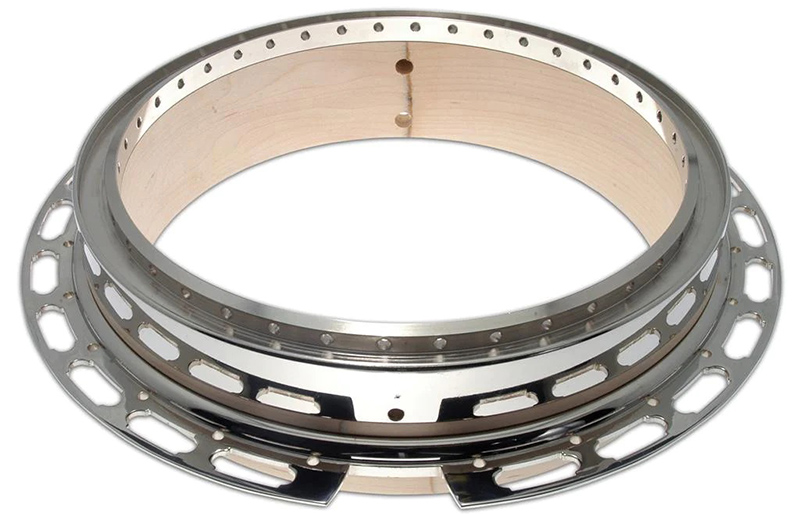
Imagining the following parts as rings from top to bottom should give you a pretty good idea of how the pot assembly works.
Tension Hoop
Usually made of brass or steel, the tension hoop encircles the head of the banjo. As a result, the head is secured at the player’s desired tension, which affects the instrument’s volume and resonance. The tension hook is held together by screws and hooks.
Banjo Head
When a banjo player plucks the strings, the banjo head vibrates as a result of the sound waves they produce. Mylar is almost always used in modern banjo heads. The first luthiers, however, used animal hides to make their instruments.
When sound waves hit the head, their thickness determines how strongly it vibrates. Depending on what you’re trying to achieve, you can swap out the heads of a banjo to create different sounds.
Tone Ring
One of the most important parts of the banjo is the tone ring. Its material determines its tonal quality and roundness of sound.
To match their intended sound, banjo players might swap out bronze tone rings for brass or some other metal.
Rim
All the other parts of the pot assembly are secured to the rim, which serves as the pot’s base.
Due to its lighter weight, it allows sound to travel throughout the pot assembly and bounce back from the resonator.
Flange
Flanges are thin metal rings attached to the bottom of pot assemblies. By isolating the pot assembly from the resonator, all its various parts are brought together cohesively.
An intricate series of clips or thumbscrews secure the flange to the resonator. Just one pot assembly missing can cause the resonator to come undone, possibly injuring the instrument.
Resonator
In contrast to other stringed instruments such as the guitar, the banjo uses a resonator to make it louder without a hole and chamber.
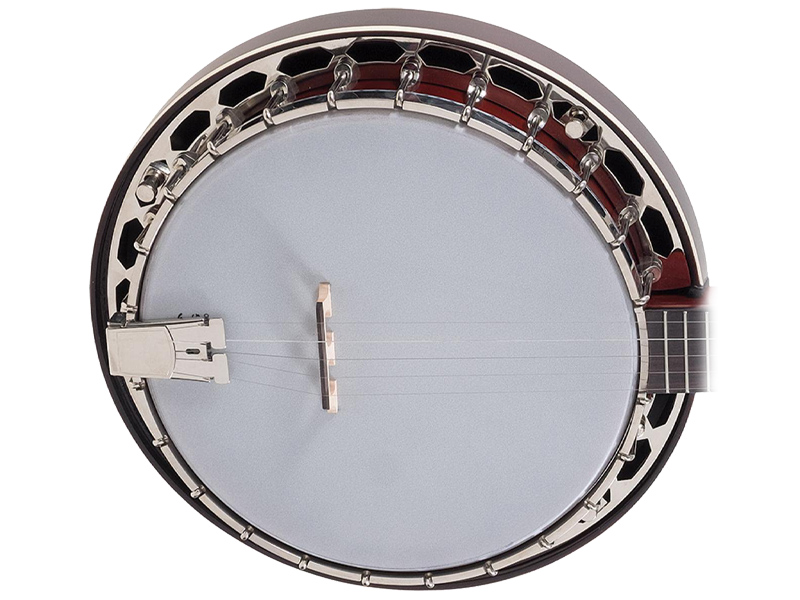
This pot assembly is secured to the resonator by a flange and serves as the instrument’s sounding board. Resonators repel sound from pot assemblies.
In the absence of the resonator, the sound from the pot assembly would simply travel toward the player. Resonators act as springboards for sound, reflecting it back toward the audience.
This video, made by the Deering Banjo Company, explains the parts of the banjo more visually. Enjoy!
Wrapping Up
This concludes our banjo parts guide. There is a special role for each piece in creating the banjo’s unique sound, and without one, the whole instrument would be incomplete.
Hopefully, this guide has provided you with more information about Banjo parts and made you more knowledgeable about them.

